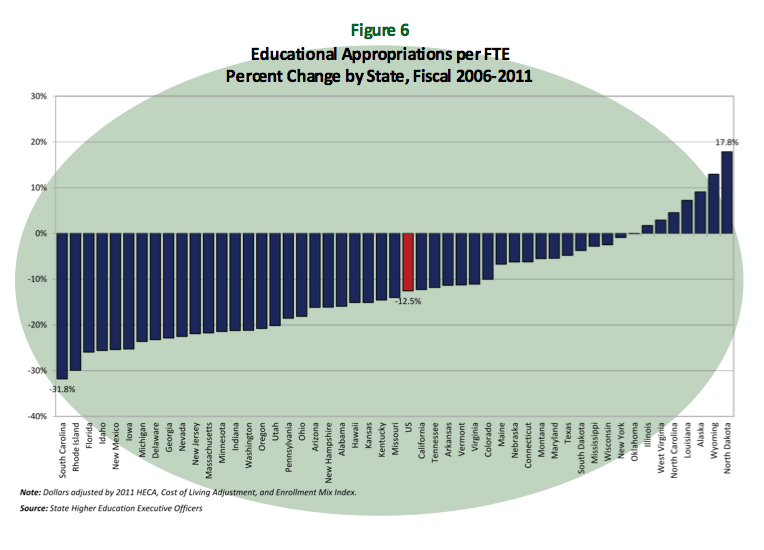Posts Tagged ‘University’
Journey “Full of Journey, Total of Discovery” Prospects Bowen to Nationwide …
Journey “Full of Adventure, Full of Discovery” Leads Bowen to National …
Born in Cincinnati, Mr. Bowen completed his college degree at Denison University in Granville, Ohio in 1955 and earned his PhD in economics at Princeton only three years later. He joined the Princeton faculty as a labor economist, becoming a full …
Read more on Town Topics
Scientists Discover Reality Consists Of 9 Dimensions, Not Just 4 Space-Time …
SEATTLE, July 17, 2013 /PRNewswire-iReach/ — Edward R. Close, PhD, PE, and Vernon M. Neppe, MD, PhD, FRSSAf, have announced a profoundly important finding that affects the basic assumptions of physics and changes the way scientists understand …
Read more on PR Newswire (press release)
Simple steps for strategic businesses
Dr Wilfred Isak April holds a PhD (Entrepreneurship) and lectures on Organizational Behavior and Entrepreneurship in the Department of Management Sciences at the University of Namibia (Unam). Related Stories. AFRIKA: THE OTHER SIDE OF THE COIN: …
Read more on New Era
Changing A/P George at Nanyang Technological University?
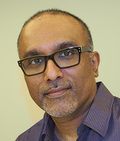 Like many social scientists with ties and genuine affection for Singapore, I was shocked when I heard Nanyang Technological University (NTU) recently denied tenure to Dr. Cherian George (pictured to the right). See here for a Storify-based compilation of stories about this ongoing debacle, and here for a 1 March University World News story. Keep in mind this is the second time he was denied tenure – the first occurred in 2009.
Like many social scientists with ties and genuine affection for Singapore, I was shocked when I heard Nanyang Technological University (NTU) recently denied tenure to Dr. Cherian George (pictured to the right). See here for a Storify-based compilation of stories about this ongoing debacle, and here for a 1 March University World News story. Keep in mind this is the second time he was denied tenure – the first occurred in 2009.
Cherian George has a truly rare capacity to shed light on the nature of state-society-economy relations in Southeast Asia (especially Singapore and Malaysia) via an analysis of media systems and practices. He is also a public intellectual, with an ability to write in a fashion free from the jargon all too often associated with media studies worlds.
I first heard about Cherian George's work when I worked in Singapore in the late 1990s and early 2000s, and then every year after, usually via colleagues at the University of Wisconsin-Madison who work in the media and communications fields. While I've never met him I can state, with confidence, he would have been tenured here at UW-Madison. Indeed, given his record and in demand areas of expertise matched with actual experience as a journalist, he'd most likely be a tenured full Professor by now. But there you go – the powers that be who govern NTU have decided to send George on his way.
Rather than speculate as to why NTU, led by President Bertil Andersson (a Swedish national, and former Chief Executive of the European Science Foundation, 2004-2007) and Provost Freddy Boey, chose to sanction this decision, I decided to think laterally and pondered what a position description for a replacement hire in George's areas of expertise would be like. It's worth reflecting on the value of having a non-expatriate professor with these capabilities in a school of communication and information, and in a university that seeks to support the media sector in a city-state that ostensibly desires to become a 'vibrant and robust' media hub.
~~~~~
HYPOTHETICAL POSITION DESCRIPTION
Media Politics: Following the denial of tenure to Dr. Cherian George (who has a PhD in Communication from Stanford University, a Masters from Columbia University’s School of Journalism, and a BA in Social and Political Sciences from Cambridge University), we are looking for an even more innovative, collaborative, and forward-thinking teacher-scholar who is interdisciplinary inclined. The successful candidate should have a PhD with an active research agenda, and teaching and advising experience. Preference will be given to candidates who study the diverse politics of the media, including the norms and practices of journalism in Singapore and Southeast Asia more broadly; the sociocultural dimensions of the production, circulation and consumption of various forms of media; the formal and informal regulation of the media; and the nature of 'alternative' media vis a vis emerging social media platforms such as weblogs, Twitter, and so on. We are particularly interested in candidates who have deep regional expertise combined with international perspectives. It is also important that all candidates have 5-10 years of journalism experience in the media industry. The candidate needs to understand and be able to teach about the complex forces and diverse perspectives shaping debates in Singapore and Southeast Asia about issues like censorship, 'intolerant' speech, 'free' speech, and the nature of state influence on media systems. The candidate should committed to enhancing the role of NTU as a place where faculty are "excited about ideas,” where "risk taking" and "breaking conventional mindsets" is the new norm, and where faculty increasingly need to encourage students to "ask questions" so as to inculcate more creative and agile mindsets.
~~~~~
Those leading NTU (such as President Bertil Andersson) have stated that they have a "responsibility to Singaporean society." It might be worth asking President Andersson if students at a "leading institution of higher education in the Asia-Pacific region" need to know about the phenomenon of media politics. And if so, who could realistically fill Dr. Cherian George's shoes?
Lastest Phd Importance Information
Sheffield Forgemasters CEO appointed chair at University of Sheffield
Dr Graham Honeyman will assume a role as an Honorary Professor in strategic management after academics at the prestigious institution granted its approval. Established in 1986, the Management School is the largest department in the Faculty of … the …
Read more on SteelGuru
'Resource Room' for special students soon
He said that he always attached great importance to the quick welfare and betterment of all students especially special students. He urged them to keep themselves engrossed … Sarfraz Ahmad Khan, a M.Phill student of Special Education Department PU in …
Read more on Pakistan Observer
The creating of a MOOC at the University of Amsterdam
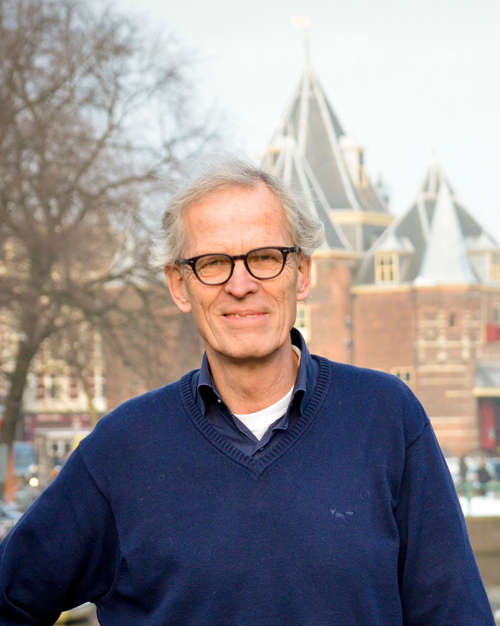 Editor's note: The guest entry beneath was written by Arie K. den Boon (PhD), visiting professor of the Department of Communication Science and organizer of the first MOOC of the University of Amsterdam. Arie K. den Boon (pictured to the correct) is also founder of StartupPush (with Paul Eikelenboom), GfKDaphne, and June Methods. My thanks to Dr. den Boon and the senior leadership of the University of Amsterdam for enabling our readers to greater understand some of the developmental dynamics of MOOCs outside of the US. This entry need to also be viewed in the context of nascent debates about the uneven international geographies of MOOCs — a theme dealt with in GlobalHigherEd by means of 'Memo to Trustees re: Thomas Friedman&rsquos &lsquoRevolution Hits the Universities,&rsquo 'Are MOOCs turning out to be mechanisms for global competitors in international greater ed?,' 'On the territorial dimensions of MOOCs,' and 'The MOOCs fad and bubble: please tell us yet another story!'.  See, as nicely, Elizabeth Redden's 'Multinational MOOCs' and the Observatory on Borderless Larger Education's 'Would you credit score that? The trajectory of the MOOCs juggernaut' (though the latter is behind a paywall).
Editor's note: The guest entry beneath was written by Arie K. den Boon (PhD), visiting professor of the Department of Communication Science and organizer of the first MOOC of the University of Amsterdam. Arie K. den Boon (pictured to the correct) is also founder of StartupPush (with Paul Eikelenboom), GfKDaphne, and June Methods. My thanks to Dr. den Boon and the senior leadership of the University of Amsterdam for enabling our readers to greater understand some of the developmental dynamics of MOOCs outside of the US. This entry need to also be viewed in the context of nascent debates about the uneven international geographies of MOOCs — a theme dealt with in GlobalHigherEd by means of 'Memo to Trustees re: Thomas Friedman&rsquos &lsquoRevolution Hits the Universities,&rsquo 'Are MOOCs turning out to be mechanisms for global competitors in international greater ed?,' 'On the territorial dimensions of MOOCs,' and 'The MOOCs fad and bubble: please tell us yet another story!'.  See, as nicely, Elizabeth Redden's 'Multinational MOOCs' and the Observatory on Borderless Larger Education's 'Would you credit score that? The trajectory of the MOOCs juggernaut' (though the latter is behind a paywall).
You can see the MOOC discussed beneath by way of this site and adhere to the linked Twitter feed by means of https://twitter.com/UvAMOOC. 
~~~~~~~~~~~~~~~~~~~~~~~~~~~~~~~~~~~~~~~~~~~~~~~~~~~~~~~~
The making of a MOOC at the University of Amsterdam
by Arie K. den Boon
The sun is coming out from behind the clouds and tends to make the lake blindingly white. Skaters have come out in huge numbers on the very first tour of the year on normal ice, commencing uneasily but finding out swiftly with developing self-confidence. Skating is 1 of those things you only find out by performing.
Although I am enjoying the gorgeous landscape and concentrate on staying away from the sudden fissures in the ice, my mobile is obtaining mails from the MOOC crew, some 13 people functioning feverously to get their 1st MOOC out to the audience. We started out with two: Rutger de Graaf, lecturer of the course Introduction to Communication Science and me, lobbying and attempting to get individuals help the notion of an MOOC. We never ever anticipated we would have so several colleagues operating on the venture. It appeared very straightforward to set up a program with video.
When I did the Artificial Intelligence program of Sebastian Thrun and Peter Norvik in late 2011, I was immediately conscious that this was much more inspiring than any online or offline college I had before. This was so rich, so demanding and gratifying, that I knew this was going to alter the planet. The movies were basic and therefore feeling intimate. They were taken in their garage and Sebastian and Peter had been clumsily shuffling pieces of paper to right handwritten formulas and photos. It looked like they spoke to you personally in a very straightforward set up. But later on I grew to become aware that it took plenty of energy and time to produce the video. Sebastian&rsquos voice was giving away and later on he was absent for a handful of lessons, and I understood he was exhausted of getting ready the MOOC at evening in his garage with standard classes and other obligations in daytime. Now I also saw that the program video clips and quizzes have been nicely orchestrated and followed a cautiously created path that ultimately brought me and my tens of thousands of fellow college students to the last exam. I obtained the certificate and could not cease talking about it this was some thing we had to do at the University of Amsterdam too. My expectations were quite large. It could carry us a lot higher high quality in our education, with a significantly richer experience simply because of the student&rsquos interaction that presented added feedback, with new explanations, examples and references on something in or associated to the course. Maybe it would also be considerably much more efficient, liberating lecturers to do far more analysis and give any amount of men and women around the planet with a browser accessibility to increased education. It would do some very good branding as properly, showing Communication Science at the University of Amsterdam is innovative in education and study.
 Quickly I discovered that it was not so simple right after all. We started in Might 2012, with almost no price range, only the believe in that the concept of a MOOC would be so compelling that we would win fans and spending budget holders along the way. And, really, we did the Graduate College, the University, the Faculty and also the best level decision makers at the University of Amsterdam liked the idea and managed to get us funding. The preparing was to get the course out in September, Okay, probably October. We bought a graphical tablet, some computer software and started experimenting. The 1st 30 seconds of the introduction took us a total day just to get proper. The program was a replicate of the off line course Rutger was providing, but a MOOC is various, considerably more compact, and in require of a distinct narrative. It took us several months to find out how to produce a relative efficient process. Peter Neijens, director of the Graduate College estimated we would be working the MOOC in January. I believed that was ridiculous, be I kept silent. Boy, we had been going to present we had been a lot quicker. But quickly I learned far better. Creating a MOOC is like moving a mountain. We now have a production group of 4, an editorial board of four, designers and PR men and women, venture managers, personnel of the College of Communication and the Graduate College, the IT crew with Frank Benneker our MOOC guru, etc. We have inner folks on the job, but also some external people, which I feel is quite healthful for both velocity and thoroughness. We have opened registration and plan to start off with the program on February 20th. I promise: we will. Soon after attending AI and a Statistics course, I now use the MOOC of Steve Blank on Udacity to coach and train pupil startups in a flipped classroom setting. The type of flipped classroom performs very properly, and employing other MOOC&rsquos assists to determine the very best ways to setup a MOOC. 1 essential part of the electrical power of MOOC&rsquos would seem to be the volume of interaction amongst students, not among students and teacher. So what a MOOC should do, especially with smaller sized numbers of students, is stimulate the interaction amongst students. The far more MOOCs we get and the fewer college students per MOOC, the a lot more essential that becomes.
Quickly I discovered that it was not so simple right after all. We started in Might 2012, with almost no price range, only the believe in that the concept of a MOOC would be so compelling that we would win fans and spending budget holders along the way. And, really, we did the Graduate College, the University, the Faculty and also the best level decision makers at the University of Amsterdam liked the idea and managed to get us funding. The preparing was to get the course out in September, Okay, probably October. We bought a graphical tablet, some computer software and started experimenting. The 1st 30 seconds of the introduction took us a total day just to get proper. The program was a replicate of the off line course Rutger was providing, but a MOOC is various, considerably more compact, and in require of a distinct narrative. It took us several months to find out how to produce a relative efficient process. Peter Neijens, director of the Graduate College estimated we would be working the MOOC in January. I believed that was ridiculous, be I kept silent. Boy, we had been going to present we had been a lot quicker. But quickly I learned far better. Creating a MOOC is like moving a mountain. We now have a production group of 4, an editorial board of four, designers and PR men and women, venture managers, personnel of the College of Communication and the Graduate College, the IT crew with Frank Benneker our MOOC guru, etc. We have inner folks on the job, but also some external people, which I feel is quite healthful for both velocity and thoroughness. We have opened registration and plan to start off with the program on February 20th. I promise: we will. Soon after attending AI and a Statistics course, I now use the MOOC of Steve Blank on Udacity to coach and train pupil startups in a flipped classroom setting. The type of flipped classroom performs very properly, and employing other MOOC&rsquos assists to determine the very best ways to setup a MOOC. 1 essential part of the electrical power of MOOC&rsquos would seem to be the volume of interaction amongst students, not among students and teacher. So what a MOOC should do, especially with smaller sized numbers of students, is stimulate the interaction amongst students. The far more MOOCs we get and the fewer college students per MOOC, the a lot more essential that becomes.
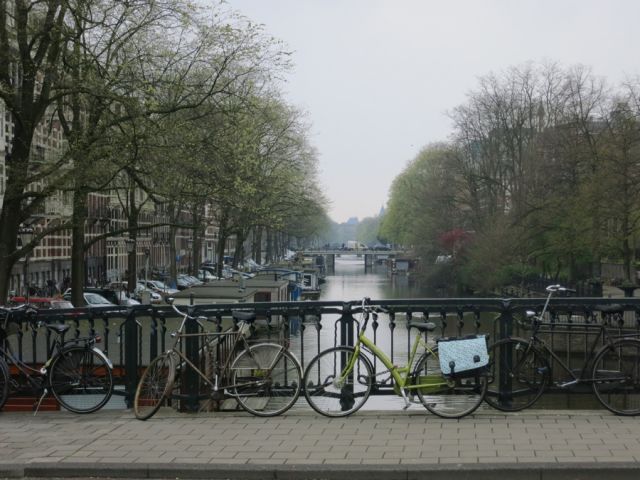 We have made a decision to see if we can join forces with Coursera, but at the identical time create on Sakai as well. Sakai is an open source environment that is produced by a huge group of universities. It has some outdated fashioned quirks, but also some new developments that make it suitable for a pilot like this one particular. Apart from, it is not however clear in which the American ventures like Coursera, edX, Udacity and other people are heading to. What is their business model? What takes place to the information of &lsquoour&rsquo students, how nicely are their private information protected the way we Europeans want it? Probably it is smart to organize a European platform as well a little bit of choice for college students and some competitors would not be hazardous. On the other hand it is clear that the greatest platform will attain the largest audience and will get the most college students. Coursera is developing faster than Facebook and seems to have closed its gates for new universities due to the fact of its tremendous development, at least temporarily. So we are content to produce on our personal platform. The fire is on, other faculties and other universities are interested and want to join the platform and find out from our experiences. The UvA MOOC crew is extremely energetic and dynamic, they know they have some thing new and exciting and want to make it perform. So I really feel a little bit guilty to be on the ice and end now and then to solution mails and hold the speed and spirit up. All goes well. Do I now have distinct expectations from MOOCs? No, except that it is a great deal of operate to make 1. Strange, why is generating a video still so complex and so considerably operate and feels so primitive? Probably this is an chance for a startup. Some 17.000 individuals have joined me on the lake, all understanding to skate again for the very first time this 12 months. It feels like a enormous open outside course!
We have made a decision to see if we can join forces with Coursera, but at the identical time create on Sakai as well. Sakai is an open source environment that is produced by a huge group of universities. It has some outdated fashioned quirks, but also some new developments that make it suitable for a pilot like this one particular. Apart from, it is not however clear in which the American ventures like Coursera, edX, Udacity and other people are heading to. What is their business model? What takes place to the information of &lsquoour&rsquo students, how nicely are their private information protected the way we Europeans want it? Probably it is smart to organize a European platform as well a little bit of choice for college students and some competitors would not be hazardous. On the other hand it is clear that the greatest platform will attain the largest audience and will get the most college students. Coursera is developing faster than Facebook and seems to have closed its gates for new universities due to the fact of its tremendous development, at least temporarily. So we are content to produce on our personal platform. The fire is on, other faculties and other universities are interested and want to join the platform and find out from our experiences. The UvA MOOC crew is extremely energetic and dynamic, they know they have some thing new and exciting and want to make it perform. So I really feel a little bit guilty to be on the ice and end now and then to solution mails and hold the speed and spirit up. All goes well. Do I now have distinct expectations from MOOCs? No, except that it is a great deal of operate to make 1. Strange, why is generating a video still so complex and so considerably operate and feels so primitive? Probably this is an chance for a startup. Some 17.000 individuals have joined me on the lake, all understanding to skate again for the very first time this 12 months. It feels like a enormous open outside course!
On the Failure of Legacy Governance at the University of Virginia
Make sure to check out: Inside Higher Ed | Blog U
Crises and controversies are almost always useful learning moments, including in the world of higher education. I’m learning much this week while observing a roiling debate about the de facto removal of the University of Virginia’s President (Teresa A. Sullivan) after a mere two years in her leadership position. I’ve also found this an interesting if uneasy affair to observe following much turmoil here at the University of Wisconsin-Madison in AY 2010-2011 about the possible separation of my university from the University of Wisconsin System via a scheme deemed the New Badger Partnership. The New Badger Partnership involved the creation of whole host of needed flexibilities, as well as a separate Board of Trustees (the equivalent of the University of Virginia’s Board of Visitors). This too was a roiling debate, which intersected, unfortunately, with the turmoil generated by Governor Scott Walker’s proposal to remove collective bargaining rights from in the public sector. To cut a long story short, our chancellor (Carolyn “Biddy” Martin) resigned after being in her position for just under three years to move to Amherst College, a bittersweet move, no doubt, for someone with genuine affection for UW-Madison.
Being immersed in the middle of huge governance debates makes one sensitive to their destructive elements, but also what they help shed light on. In this entry, I’ll try and flag some key events and resources to track the unfolding of the University of Virginia controversy, but also stand back and draw a few lessons, especially with respect to the governance of US public research universities in an era of austerity.
The official statements about President Sullivan’s removal can be read here:
- Teresa Sullivan To Step Down Aug. 15 as U.Va. President (10 June)
- Full Text of Email Announcing Sullivan’s Stepping Down (10 June)
- Rector Dragas’ Remarks to VPs and Deans (10 June)
- Statement from Gov. McDonnell (10 June)
The decision was announced by Helen E. Dragas, Rector of the University of Virginia’s Board of Visitors. As noted on the University website:
The Board of Visitors is composed of sixteen voting and one ex-officio non-voting members appointed by the Governor of the Commonwealth of Virginia, subject to confirmation by the General Assembly, for terms of four years. In addition, at the first regular meeting of the second semester of the academic session each year, on recommendation of the Executive Committee, the Board of Visitors may appoint for a term of one year, a full-time student at the University of Virginia as a nonvoting member of the Board of Visitors. The Rector and Visitors serve as the corporate board for the University of Virginia, and are responsible for the long-term planning of the University. The Board approves the policies and budget of the University, and is entrusted with the preservation of the University’s many traditions, including the Honor System.
Link here for the MANUAL OF THE BOARD OF VISITORS OF THE UNIVERSITY OF VIRGINIA 2004 (rev February 23, 2012) for full details on the Board’s “powers and duties,” which includes appointing and removing the University’s President.
Yet, in less than one week, we’ve also seen:
- College chairs, program directors issue letter to “;protest” Sullivan’s resignation (13 June)
- Statements by Rector Dragas (13 June) and EVP/Provost John Simon and EVP/COO Michael Strine (14 June) stating that “The Board of Visitors’ action is resolute and authoritative” and “confidential” in nature
- News, via the Washington Post, that many of the reasons hinted at removing Sullivan were in fact flagged by Sullivan herself on 3 May in a frank and reflective strategy document
- The emergence of an online petition (Rector and the Board of Visitors of the University of Virginia: Reinstate Teresa Sullivan as President of the University of Virginia) with 1000+ signatures
- The emergence of a Facebook page, satirical website and Twitter feeds (e.g, http://twitter.com/RectorDrago) regarding the Board of Visitors, especially the board’s rector, Helen E. Dragas, and vice rector, Mark J. Kington.
- Discovery that the Board of Visitors’ “dodged” public notice law (14 June)
- Resignation of the Darden Foundation’s Board of Trustees (Peter Kiernan) (14 June), following the release of an email (10 June) exposing his involvement in this supposedly “confidential” matter
- A Faculty Senate rebuke of the Board of Visitors, including its “lack of confidence in the Rector, the Vice Rector, and the Board of Visitors” (14 June)
- News, via the Washington Post, that ‘Three members of U-Va. board were kept in dark about effort to oust Sullivan,’ that only three members of the executive committee of the Board were able to attend the meeting where the final decision was made, and that the Governor of Virginia was not accurately informed [lied to?] about the deliberative process within the Board
- Student Council’s Request to the Board of Visitors for “a full explanation of the events and circumstances surrounding the departure of President Teresa Sullivan” (15 June)
- Virginia Governor Bob McDonnell calls “for more dialogue between the University of Virginia’s faculty and governing board,” that his office should not be involved in Board of Visitor decisions, and that “;All I can tell you is that we have very qualified people that serve on these boards,” McDonnell said. “; … They’re really top-flight people. A lot of business people that have run major organizations. And these decisions are largely left up to the boards.” (15 June)
- Resolution of College Faculty of Arts and Sciences Steering Committee (15 June)
There is ample coverage about the process, and the issues, via this pre-programmed Google search, and these local Virginian news sites:
- The Cavalier Daily
- The Daily Progress
Twitter is a great resource as well if you use the #UVa or #Sullivan hashtags.
Now, after 11 years here in the US, just as I start to think I’ve figured this country and its higher education institutions out, I get sideswiped yet again. What is surprising about this case?
First, look at the occupations of the 16 members of this key governance unit that the current and most recent Governors have appointed. As the Washington Post also noted:
And most of the 16 voting members of the University of Virginia’s governing board of visitors have given campaign contributions to governors who appointed them. In some cases, donations added up to hundreds of thousands of dollars.
This is a patently unbalanced and inward-oriented board, drawing from a very narrow segment of society. Given this approach to sourcing Board members, the capacity for group think, and an inability to reflect on the larger extra-Virginian context (including outside the US), cannot help but be limited. The homogeneous nature of the Board of Visitors arguably helps to explain how ineffective they are in handling this issue, and understanding how organizations like universities actually function.
Second, and on a related note, where are the faculty and staff voices on this Board? All we see are alumni (almost all business people, doctors and lawyers) and one “full-time student at the University of Virginia as a nonvoting member.” Even the heavily debated Board of Trustees being considered here at UW-Madison was to have 11 members appointed by the Governor, with the remaining 10 members representing multiple UW-Madison constituencies (faculty, staff, classified staff, alumni, tech transfer).
Third, there is a huge and still growing gap between declining level of public funding for public higher education in the US and the desire of state governments to maintain if not increase their governing power. In the case of the University of Virginia, for example, see these figures (and note the dark red element which is State Appropriations):
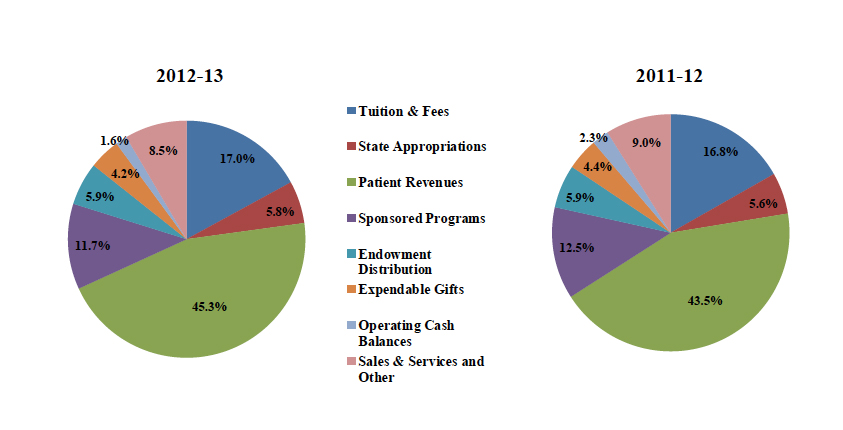
Figure 1: SOURCES FOR THE CONSOLIDATED OPERATING EXPENDITURE BUDGET (Source: University of Virginia, 2012-2013 Budget Summary All Divisions)
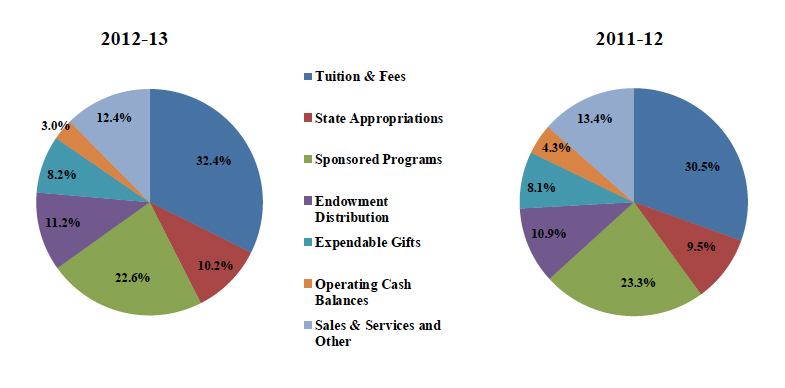
Figure 2: SOURCES FOR THE ACADEMIC DIVISION OPERATING EXPENDITURE BUDGET (Source: University of Virginia, 2012-2013 Budget Summary All Divisions)
These are important yet very limited proportions of revenue, and they’re not likely to get any larger in the long run. The austerity approach to higher education, so evident in many US states, clearly rules in Virginia. As the State Council of Higher Education for Virginia noted, in July 2011:
Five consecutive years of general fund (state tax revenue) budget reductions have put the affordability and accessibility of Virginia’s nationally acclaimed system of public higher education at risk. Measurements of the student cost share of education and the cost as a percentage of per capita disposable income at Virginia institutions are both at record high levels (least affordable).
This is also a question that needs to be flagged at the national scale in the US, as is evident in this State Higher Education Executive Officers (SHEEO) figure:
